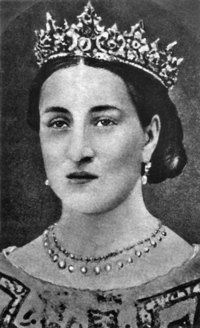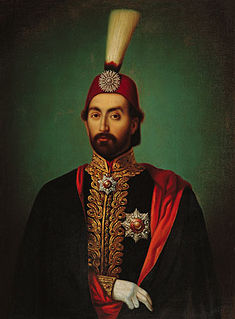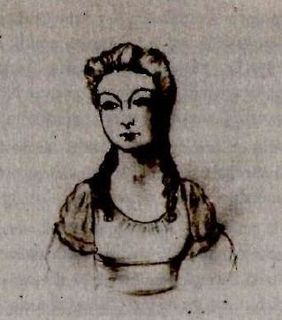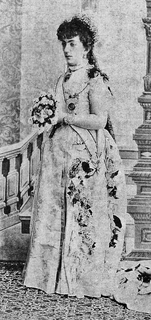| Fatma Sultan | |
|---|---|
 | |
| Born | 1 November 1840 Istanbul, Ottoman Empire |
| Died | 29 August 1884 (aged 43) Istanbul, Ottoman Empire |
| Burial | New Mosque, Istanbul |
| Spouse | Ali Galip Pasha Nuri Pasha |
| Issue | Cemile Sultan Sultanzade Mehmed Fuad Bey Emine Lütfiye Sultan |
| Dynasty | Ottoman |
| Father | Abdulmejid I |
| Mother | Gülcemal Kadın |
| Religion | Sunni Islam |
Fatma Sultan (Ottoman Turkish : فاطمہ سلطان; 1 November 1840 – 29 August 1884) was an Ottoman princess, the daughter of Sultan Abdulmejid I (reign 1839 - 1861) and sister of Sultan Mehmed V (reign 1909 - 1918) of the Ottoman Empire.
Ottoman Turkish, or the Ottoman language, is the variety of the Turkish language that was used in the Ottoman Empire. It borrows, in all aspects, extensively from Arabic and Persian, and it was written in the Ottoman Turkish alphabet. During the peak of Ottoman power, Arabic and Persian vocabulary accounted for up to 88% of the Ottoman vocabulary, while words of foreign origin heavily outnumbered native Turkish words.

Abdülmecid I or Tanzimatçı Sultan Abdülmecid due to the Tanzimat reforms he conducted, he is also known as Abdulmejid and similar spellings, was the 31st Sultan of the Ottoman Empire and succeeded his father Mahmud II on 2 July 1839. His reign was notable for the rise of nationalist movements within the empire's territories. Abdulmejid wanted to encourage Ottomanism among the secessionist subject nations and stop the rise of nationalist movements within the empire, but failed to succeed despite trying to integrate non-Muslims and non-Turks more thoroughly into Ottoman society with new laws and reforms. He tried to forge alliances with the major powers of Western Europe, namely the United Kingdom and France, who fought alongside the Ottoman Empire in the Crimean War against Russia. In the following Congress of Paris on 30 March 1856, the Ottoman Empire was officially included among the European family of nations. Abdulmejid's biggest achievement was the announcement and application of the Tanzimat (reorganization) reforms which were prepared by his father and effectively started the modernization of the Ottoman Empire in 1839. For this achievement, one of the Imperial anthems of the Ottoman Empire, the March of Abdulmejid, was named after him.

Mehmed V Reşâd was the 35th and penultimate Ottoman Sultan. He was the son of Sultan Abdulmejid I. He was succeeded by his half-brother Mehmed VI. His nine-year reign was marked by the cession of the Empire's North African territories and the Dodecanese Islands, including Rhodes, in the Italo-Turkish War, the traumatic loss of almost all of the Empire's European territories west of Constantinople in the First Balkan War, and the entry of the Empire into World War I, which would ultimately lead to the end of the Ottoman Empire.












